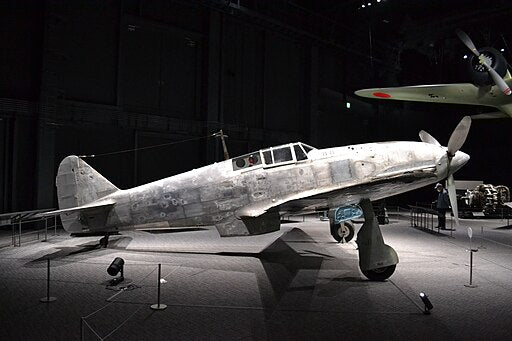The Allied forces assigned the code name “Tony” to the Kawasaki Ki-61, a Japanese fighter aircraft in World War II. This moniker carries an intriguing backstory, linked to both the distinctive design of the aircraft and the naming traditions employed by the Allied military.
Allied Naming Conventions
During World War II, the Allied forces instituted a naming system for Japanese aircraft to streamline their identification and communication process. Male names were attributed to fighter planes, female names to bombers, and tree names were designated for reconnaissance aircraft. These names were typically selected for their catchiness and memorability, which provided easy recall for pilots and ground staff.
The Western Appearance of the Ki-61
The Kawasaki Ki-61 was unique among Japanese fighters of the time due to its inline, liquid-cooled engine, a design more commonly associated with European aircraft. Its sleek and streamlined appearance confused Allied pilots, who initially believed it to be a German or Italian design.
The Name “Tony”
The code name “Tony” was selected for the Ki-61, though the precise reason for this choice is not thoroughly recorded. It’s speculated that the name was picked mainly due to its status as a familiar and readily identifiable male name. Unlike other code names, “Tony” did not bear any particular significance or allusion to the aircraft’s features.
Some sources suggest that the name “Tony” was chosen because the aircraft’s appearance was reminiscent of European designs, and the name sounded more Western. This aligns with the initial confusion about the aircraft’s origin.
Impact of the Name
The name “Tony” became widely used among the Allied forces, and the Ki-61 became well-known by this nickname. Allied pilots respected the aircraft for its speed and agility, which played a significant role in various air battles in the Pacific theater.
The Kawasaki Ki-61’s nickname “Tony” is a product of the Allied forces’ naming conventions and the aircraft’s unique, Western-like appearance. While the name may seem arbitrary, it reflects the broader practice of assigning easily recognizable and memorable names to enemy aircraft. This practice helped simplify communication and identification during World War II’s chaotic and fast-paced air battles. The name “Tony” has since become synonymous with the Ki-61, preserving a small but intriguing piece of aviation history.
For more insights into the Tony and other important military aircraft, visit Aces In Action. Here, you’ll find an amazing piece of artwork by Craig Tinder titled “Final Defense of 357,” that depicts the Captain Teruhiko Kobayashi of the 244th Sentai in his desparate ramming attack against U.S. B-29 Superfortress bombers. The limited edition canvas print even includes a piece of a Ki-61 “Tony” (No. 704) at Babo Island Airstrip, Irian Jaya, New Guinea. Babo Airstrip was used by the Royal Australian Air Force
Final Defense of 357 – Ki-61 Hein ‘Tony’ Aviation Art Print by Artist Craig Tinder
27 January 1945 – Captain Teruhiko Kobayashi of the 244th Sentai, prepares for an attack on the B-29 Superfortresses of the 497th Bombardment Group, 73rd Bomb Wing. The 497th had attempted to attack Target 357 (aircraft engine factories) numerous times with little impact. On this day, Kobayashi dived down with his wingman and attacked the B-29 “Irish Lassie” (42-65246) by crashing his Ki-61 Hein (Tony) into the bomber’s wing. Awaking after a brief period of unconsciousness, Kobayashi parachuted to safety. Although claimed as a kill by the Japanese that day, “Irish Lassie” safely delivered her crew back to base and broke in two upon landing.





Share:
Why Russia copied the B-29?
Did an F4U Corsair Shoot Down a MiG-15?